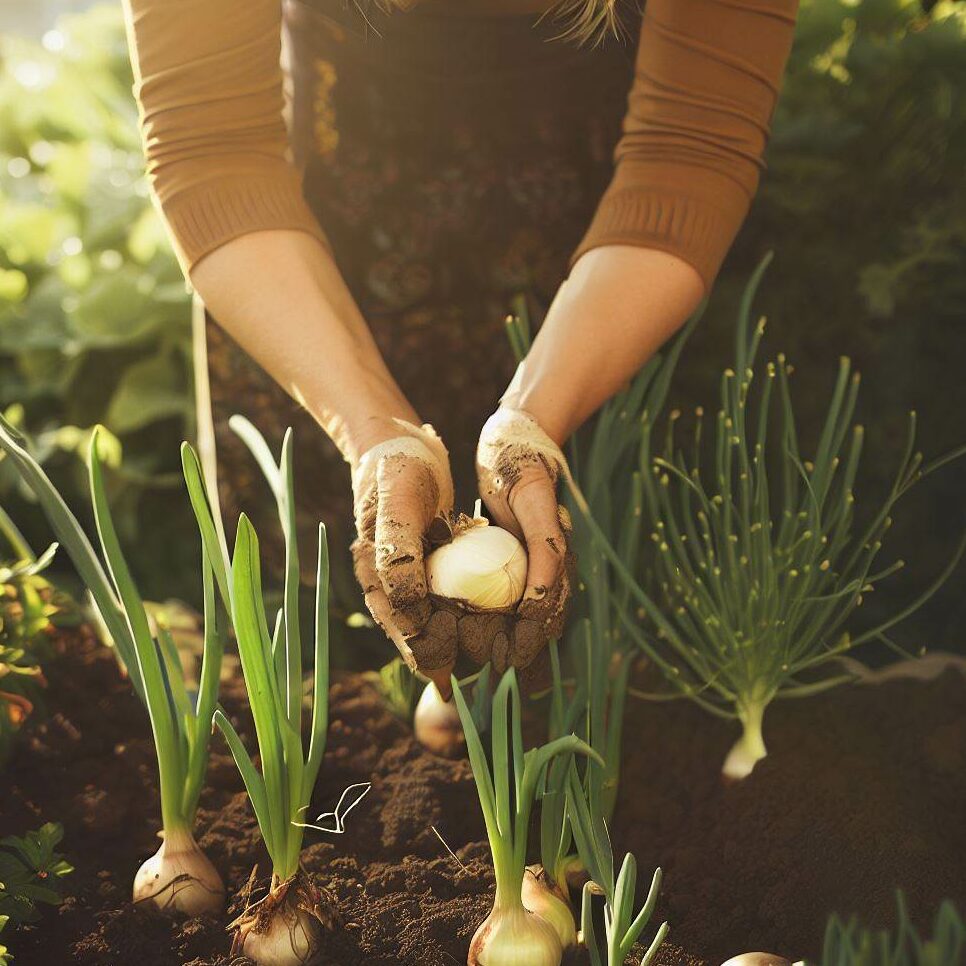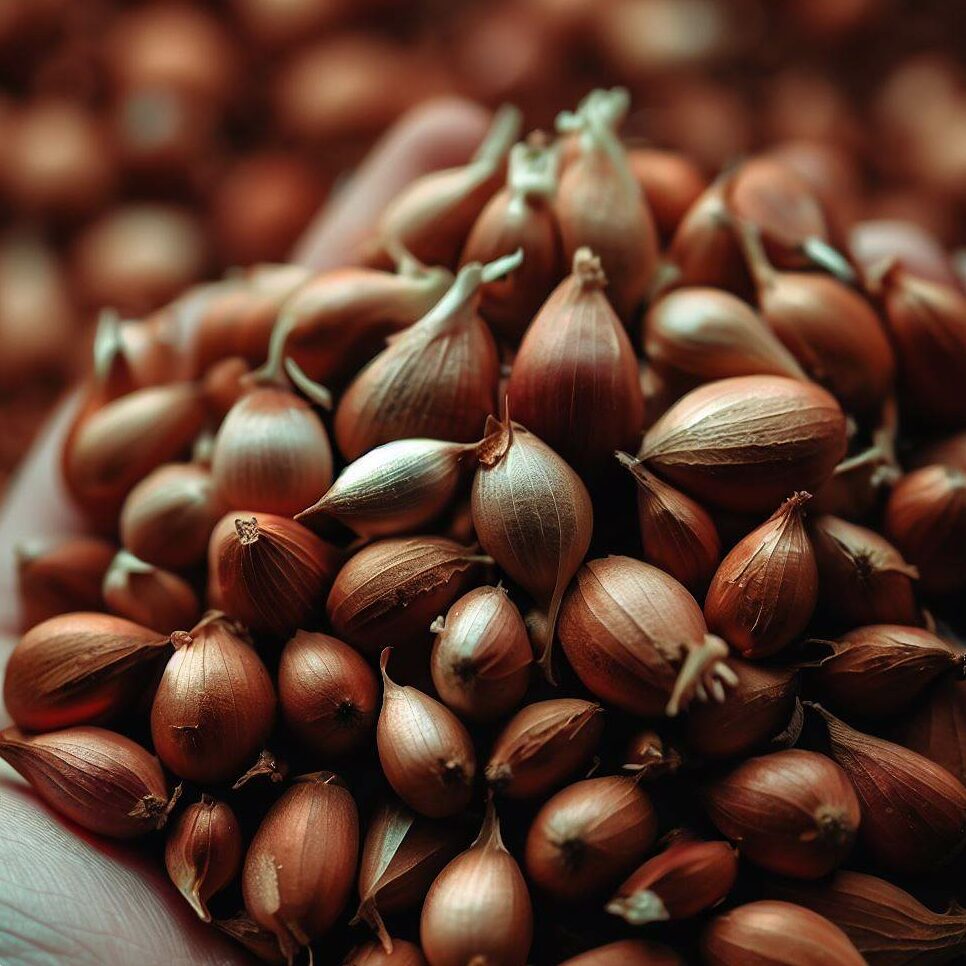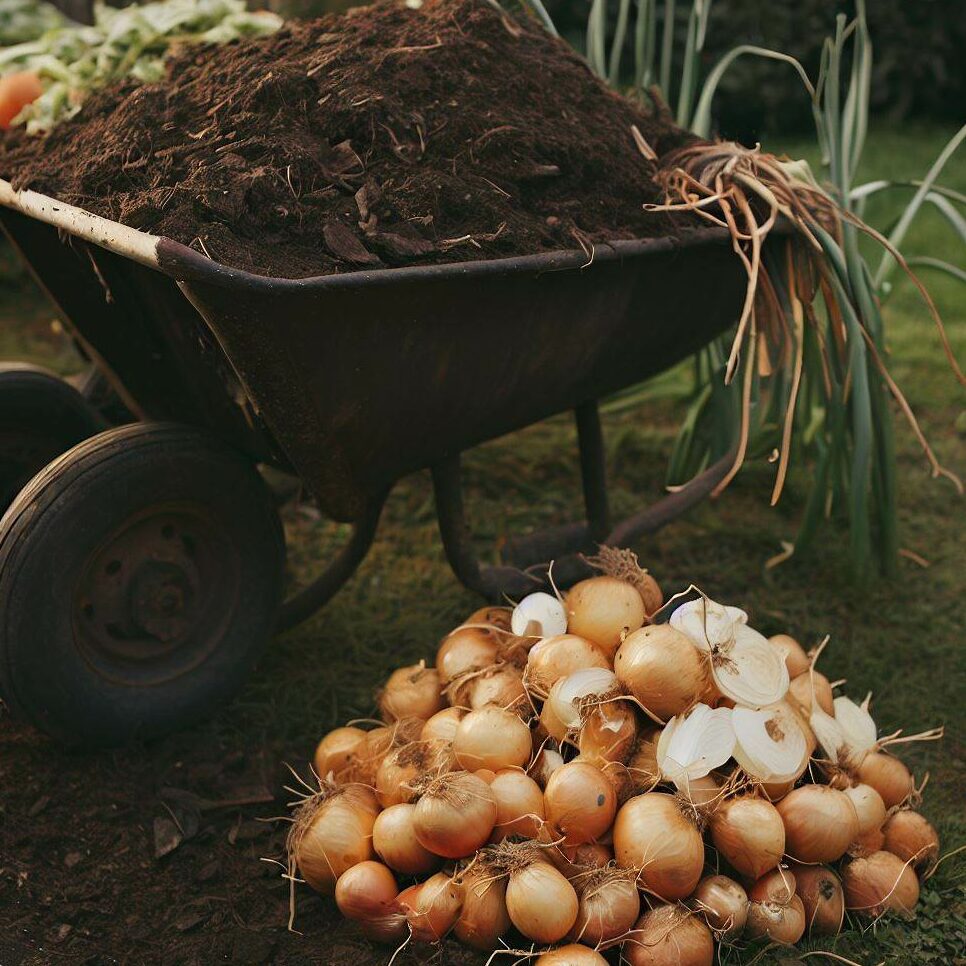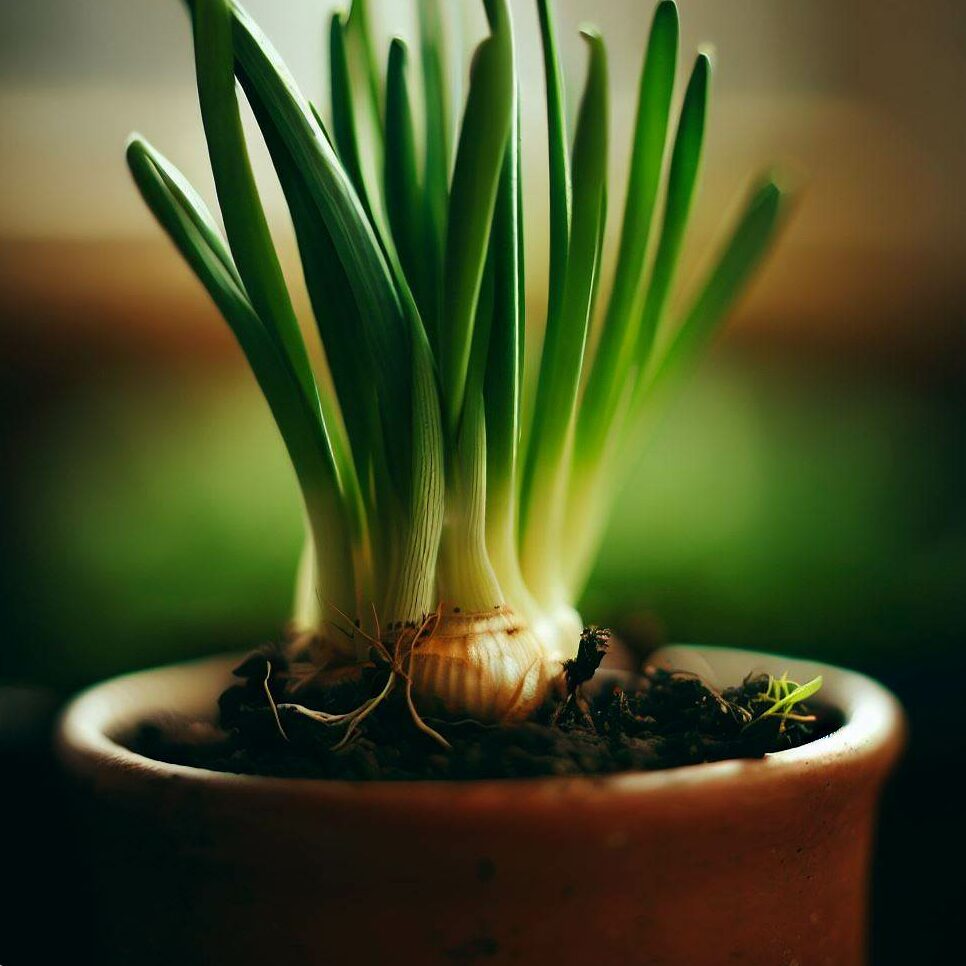Onions, a staple in kitchens around the world, owe their success to more than just a gardener’s green thumb. The secret to a bountiful harvest lies beneath the surface, in the very soil where these versatile bulbs take root.
The best soil for onions is a well-drained, sandy loam that is rich in organic matter. Onions prefer a slightly acidic to neutral pH level, ideally between 6.0 and 6.8. This type of soil provides the ideal balance of drainage and moisture retention, ensuring that the onion bulbs receive the right amount of water without becoming waterlogged.

Understanding the Importance of Soil in Onion Cultivation
If you’ve ever wondered why your onions aren’t as plump, juicy, or flavorful as you’d like, the answer might be right beneath your feet. The soil in which your onions grow plays a major role in determining the health, size, and flavor of your harvest.
Soil is dynamic ecosystem that provides the essential nutrients, water, and air that onions need to thrive. Different soil types can significantly affect the growth of your onions.
Why Soil Matters for Growing Onions
Onions are heavy feeders, meaning they require a rich supply of nutrients to grow well. The soil is their primary source of these nutrients. Nitrogen, phosphorus, and potassium, often referred to as the N-P-K ratio on fertilizer bags, are particularly important for onions.
🌱 Onion Observation: A balanced fertilizer with an N-P-K ratio of 10-10-10 is often recommended for onions. 🌱
But it’s not just about nutrients. The texture and structure of the soil can affect how well water drains away from the onion bulbs. Onions don’t like to have ‘wet feet’. If the soil holds too much water, it can lead to bulb rot, a common problem when growing onions.
How Different Soil Types Affect Onion Growth
There are three primary types of soil: sandy, loamy, and clay. Each has its own characteristics and can impact onion growth differently.
Sandy Soil: This type of soil is loose and gritty to the touch. While it drains water well, it can drain too quickly, causing it to dry out and not retain enough nutrients for the onions.
Clay Soil: Clay soil is dense and heavy, and it can hold onto water for too long, leading to waterlogged conditions that onions dislike. It’s also harder for the onion bulbs to push through dense clay soil.
Loamy Soil: Loamy soil is the gold standard for most gardeners. It’s a balanced mix of sand, silt, and clay, and it offers the best of both worlds. It drains well but retains enough moisture and nutrients for the plants.
🌱 Onion Observation: If you’re not blessed with naturally loamy soil, don’t worry. You can improve your soil’s texture and nutrient content by adding organic matter like compost or well-rotted manure. 🌱
Understanding your soil type and how it affects your onion growth is the first step towards a successful harvest.

Understanding the Importance of Soil in Onion Cultivation
Your garden soil is a dynamic, living ecosystem that provides the essential nutrients, water, and air that your onions need to grow. Different soil types can significantly affect the growth of your onions.
The Role of Organic Matter
Organic matter plays a pivotal role in creating the ideal soil environment for onions. It improves soil structure, enhances water and nutrient retention, and fosters beneficial soil organisms. All these factors contribute to healthier, more robust onions.
To increase the organic matter in your soil, consider adding well-rotted compost or aged manure to your garden. These additions not only enrich the soil with nutrients but also improve its texture and drainage – a win-win for your onions!
🌱 Onion Observation: Regularly adding organic matter to your soil can help maintain its fertility over time, making it a good practice not just for this season’s onions, but for future crops as well.🌱
Understanding Soil pH for Onions
The pH level of your soil can significantly impact the health of your onions. Onions prefer a slightly acidic to neutral pH, ideally between 6.0 and 6.8. At this pH range, onions can effectively absorb the nutrients they need from the soil.
If your soil is too acidic or too alkaline, don’t worry – it’s not a lost cause. You can adjust your soil’s pH with the help of lime (to raise pH) or sulfur (to lower pH). Remember, adjusting soil pH is a gradual process, so it’s best to start well before you plan to plant your onions.
🌱 Onion Observation: Regular soil testing can help you keep track of your soil’s pH and nutrient levels, allowing you to make necessary adjustments for optimal onion growth.🌱
Different Ways of Planting Onions: Seeds vs Sets
When it comes to planting onions, you have two main options: seeds or sets. But what exactly are onion sets? Simply put, onion sets are small, immature onion bulbs that have been grown the previous year. They’re ready to plant right out of the bag, offering a head start on the growing season.
Now, let’s compare planting onions from seeds versus sets.

Planting Onion Seeds:
Planting onions from seeds gives you a wider variety of onion types to choose from, as not all varieties are available as sets. It’s also generally more cost-effective, especially if you’re planning a large onion garden.
However, growing onions from seeds can be a bit more challenging. It requires starting the seeds indoors in most climates, then transplanting the seedlings outdoors once the weather warms up. It also takes longer for onions to mature from seeds than from sets.
Planting Onion Sets:
On the other hand, planting onion sets is quick and easy. You simply plant the sets directly in your garden, and they’ll start growing right away. This method can be particularly rewarding for beginner gardeners, as it often results in a faster harvest.
The downside? Onion sets can sometimes bolt, or go to seed, especially if they’re exposed to cold temperatures. This results in smaller onions. Also, you’ll have fewer varieties to choose from compared to seeds.
Pro Tip: Whether you choose to plant seeds or sets, remember that onions are a cool-season crop. They can be planted as soon as the ground can be worked in the spring, usually late March or April.
🌱 Onion Observation: Whether you choose to plant seeds or sets, remember that onions are a cool-season crop. They can be planted as soon as the ground can be worked in the spring.🌱
In the end, the choice between seeds and sets depends on your personal preferences, your gardening skills, and the specific conditions in your garden. Both methods have their pros and cons, but either can result in a bountiful onion harvest with the right care and attention.
Preparing Your Soil for Onion Planting
Before you plant your onions, whether from seeds or sets, it’s essential to prepare your soil properly. This preparation will ensure that your onions have the best possible environment to grow and thrive.

Test Your Soil: Start by testing your soil’s pH and nutrient levels. As we’ve discussed, onions prefer a slightly acidic to neutral pH (6.0 to 6.8). A soil test will tell you if you need to adjust your soil’s pH or add any specific nutrients.
Add Organic Matter: Next, enrich your soil with organic matter. This could be compost, well-rotted manure, or a green manure crop turned into the soil. Organic matter improves soil structure, enhances water and nutrient retention, and fosters beneficial soil organisms.
Turn the Soil: Once you’ve added organic matter, turn the soil to a depth of at least 12 inches. This process helps to mix in the organic matter and break up any compacted soil, making it easier for onion roots to penetrate the soil.
Add Fertilizer: Finally, apply an organic nitrogen-rich fertilizer to the soil. Nitrogen is particularly important for onions as it promotes healthy, vigorous leaf growth, which in turn leads to larger bulbs.
🌱 Onion Observation: Apply the fertilizer according to the package instructions, then mix it into the top few inches of soil.🌱
Common Questions About Growing Onions
As a gardener, you may have a few questions about growing onions. After all, while onions are generally easy to grow, there are certain factors that can significantly affect their growth and yield. Let’s address some of the most common questions gardeners have about growing onions.
How Can I Get My Onions to Grow Bigger?
Growing big onions isn’t just about luck; it’s about providing the right conditions for your onions to thrive. Here are a few tips:
- Choose the Right Variety: Some onion varieties naturally grow larger than others. If big onions are your goal, start with a variety known for its size.
- Prepare Your Soil: As we’ve discussed, onions prefer well-drained, fertile soil rich in organic matter. Make sure your soil is well-prepared before planting.
- Water and Feed Regularly: Onions need consistent moisture and regular feeding with a nitrogen-rich fertilizer to grow big.
- Give Them Space: Onions need space to grow. Plant them at least 4-6 inches apart to allow for bulb expansion.
🌱 Onion Observation: Remember, the size of the onion bulb is directly related to the size and number of the leaves or tops. The more leaves, the larger the bulb.🌱
How Deep Should I Plant Onions?
Whether you’re planting onion seeds or sets, you don’t need to plant them very deep. For seeds, a depth of about 1/4 to 1/2 inch is sufficient.
For sets, plant them so that the tip is just barely visible above the soil surface. Planting onion sets too deep can lead to poor bulb development and make the onions more susceptible to disease.
Growing Onions in Different Settings
Whether you have a spacious garden, a small patio, or a balcony, you can grow onions. Let’s explore how to cultivate onions in different settings, specifically in pots and raised beds.

Growing Onions in Pots
If space is limited, growing onions in pots is a fantastic option. Here are some considerations and tips for container onion gardening:
- Choose the Right Container: Onions aren’t particularly deep-rooted, so the container doesn’t need to be very deep. However, it should be wide enough to accommodate the onions without crowding them. A depth of at least 6 inches and a width of 12 to 18 inches is ideal.
- Use Quality Potting Soil: The best soil for onions in pots is a well-draining potting mix. Avoid using garden soil, which can compact in containers and hinder onion growth.
- Water Regularly: Containers dry out faster than garden soil, so check the moisture level regularly and water as needed.
🌱 Onion Observation: Consider growing smaller onion varieties or bunching onions in pots. They’re perfectly suited to container gardening.🌱
Growing Onions in Raised Beds
Raised beds offer several benefits for growing onions. They provide excellent drainage, prevent soil compaction, and allow for better control over the soil composition.
- Prepare the Bed: Just like in-ground gardening, prepare your raised bed by adding organic matter and a nitrogen-rich fertilizer. best soil for onions in raised beds is loose and well-draining.
- Plant Correctly: Plant your onions at the right depth and spacing. In a raised bed, you can typically plant onions closer together than in a traditional garden row.
- Keep Weeds in Check: Raised beds can be easier to maintain than traditional garden beds. Keep your bed weed-free to prevent competition for nutrients.
🌱 Onion Observation: Raised beds warm up faster in the spring, allowing for an earlier start to the onion planting season.🌱
Remember, the key to successful onion gardening, whether in pots, raised beds, or traditional garden rows, is proper preparation and care.

[…] the Soil: Onions love well-drained soil rich in organic matter. Before planting, mix compost or well-rotted manure into the soil to enhance its fertility and […]